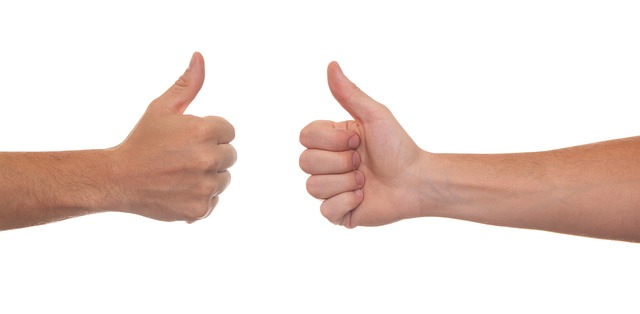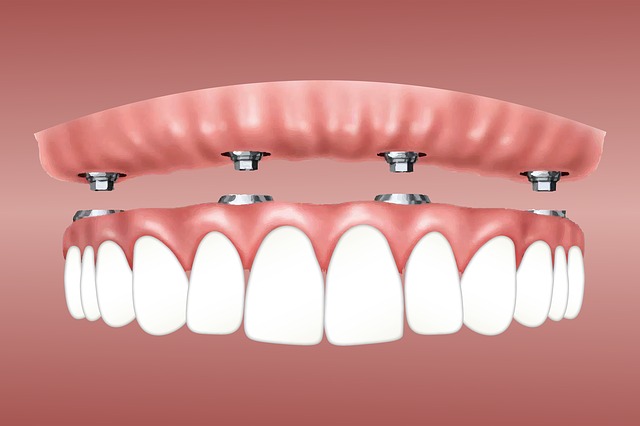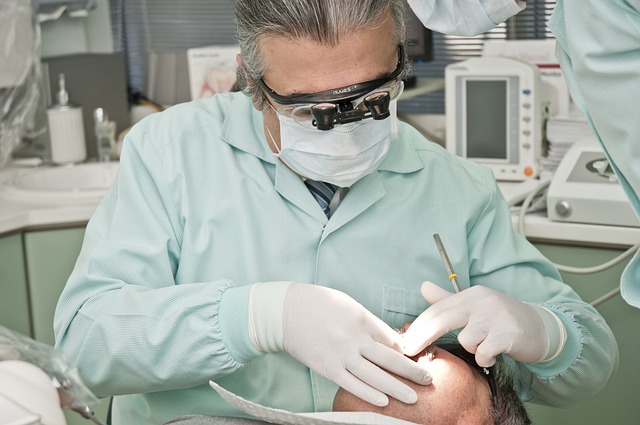Say Goodbye to Gaps: Can Retainers Fix Small Gaps?
Are you tired of those pesky gaps between your teeth? Do they make you self-conscious every time you smile? Well, say goodbye to gaps, because we have an exciting solution for you! Retainers, often associated with post-braces maintenance, might just be the secret weapon in closing those small gaps and giving you the flawless smile you’ve always dreamed of. In this article, we will delve into the world of retainers, exploring their effectiveness in fixing small gaps, and why they might be the answer you’ve been searching for. So, buckle up and get ready to bid farewell to those gaps, as we reveal the potential of retainers in transforming your smile.
1. Understanding the Role of Retainers: A Promising Solution for Small Gaps
Retainers play a crucial role in orthodontics, especially when it comes to addressing small gaps between teeth. These dental devices are designed to maintain the alignment of teeth following orthodontic treatment, ensuring the results are long-lasting. By wearing a retainer, you can prevent your teeth from reverting back to their original positions and keep your smile looking its best.
Here are some key points to understand about retainers:
– Retainers are custom-made for each individual, ensuring a precise fit that is comfortable to wear.
– They can be either removable or fixed, depending on your specific treatment needs and preferences.
– Retainers are typically made of clear plastic or wire, making them discreet and less noticeable.
– They are usually worn full-time for the first few months after orthodontic treatment, gradually transitioning to nighttime wear only.
– Regular check-ups with your orthodontist are essential to monitor the condition of your retainer and make any necessary adjustments.
Remember, by faithfully wearing your retainer as instructed, you can maintain the results of your orthodontic treatment and enjoy a confident, gap-free smile for years to come.

2. How Do Retainers Work to Close Small Gaps in Your Teeth?
Retainers are a common orthodontic appliance used to close small gaps in your teeth. They work by applying gentle and continuous pressure to the teeth, gradually moving them into the desired position. Here’s how retainers effectively close those gaps:
1. Maintaining Alignment: Once your braces are removed, there is a risk that your teeth may shift back to their original positions. Retainers help prevent this by maintaining the alignment achieved during orthodontic treatment. By wearing retainers as instructed by your orthodontist, you can ensure that your teeth stay in their new positions and any small gaps are closed.
2. Closing Small Gaps: Retainers are specifically designed to address small gaps between teeth. The pressure exerted by the retainer’s wire or plastic material helps push the teeth together, gradually closing the gaps. This process may take some time, as the teeth need to shift and adjust to their new positions. Regular wear of the retainer, especially during the first few months after braces, is crucial to effectively close these gaps and maintain the desired alignment of your teeth.

3. Exploring the Effectiveness of Retainers in Fixing Small Gaps
Retainers are a commonly used orthodontic appliance that can effectively address small gaps between teeth. These gaps, also known as diastemas, can be a cause of concern for many individuals seeking to achieve a straight and aligned smile. Fortunately, retainers offer a non-invasive and efficient solution for closing these gaps and improving overall dental aesthetics.
How do retainers work to fix small gaps? Firstly, retainers apply gentle pressure on the teeth, gradually moving them closer together. This pressure allows the teeth to adjust their position over time, reducing the size of the gaps. Retainers are custom-made to fit each patient’s mouth, ensuring a comfortable and secure fit. Additionally, retainers can be easily removed for eating, brushing, and flossing, making them a convenient and practical choice for those looking to close small gaps.

4. The Advantages and Limitations of Using Retainers for Gap Closure
Retainers are commonly used in orthodontics to close gaps between teeth. They offer several advantages that make them an attractive option for patients seeking a non-invasive method of achieving a more aligned smile.
- Conservative Approach: Retainers provide a conservative alternative to more invasive orthodontic treatments, such as braces or aligners. They are typically less noticeable and require minimal adjustment to the teeth, making them a popular choice for individuals who want to avoid more extensive dental work.
- Cost-Effective: Compared to other orthodontic treatments, retainers are often more cost-effective. They require fewer appointments and adjustments, resulting in potential savings for patients. Additionally, retainers can help prevent future dental issues, which may lead to additional expenses down the line.
- Maintain Oral Hygiene: Retainers are removable, allowing for easy oral hygiene maintenance. Unlike fixed braces, which can make brushing and flossing more challenging, retainers can be taken out during oral care routines, ensuring optimal dental hygiene.
However, it is important to recognize the limitations of using retainers for gap closure:
- Size and Location of Gaps: Retainers are most effective for closing small to moderate gaps between teeth. If the gaps are significant or require extensive tooth movement, other treatment options may be more appropriate.
- Compliance: The success of using retainers for gap closure heavily relies on patient compliance. Regular wear and proper maintenance are essential for achieving the desired results. Patients must commit to wearing their retainers as instructed by their orthodontist to ensure the effectiveness of this treatment option.

5. Retainers vs. Traditional Orthodontic Treatment: Which is Better for Small Gaps?
When it comes to treating small gaps between the teeth, both retainers and traditional orthodontic treatment can be effective options. Here, we will explore the benefits and considerations of each, helping you make an informed decision.
Retainers:
- Retainers are a non-invasive and less time-consuming option compared to traditional orthodontic treatment.
- They are typically used for minor adjustments and maintaining the position of the teeth after orthodontic treatment.
- Retainers can be removable or fixed, depending on the severity of the gap and the desired outcome.
- They are discreet and comfortable to wear, making them an attractive choice for individuals who prefer a more subtle approach.
- Retainers are generally more affordable than traditional orthodontic treatment, making them a cost-effective solution for small gaps.
Traditional Orthodontic Treatment:
- Traditional braces are a popular choice for correcting small gaps as well as other orthodontic issues.
- They are highly effective in gradually shifting teeth into the desired position.
- Traditional orthodontic treatment can address a variety of dental concerns, such as overcrowding, misalignment, and bite issues.
- While braces may be more noticeable than retainers, advancements in orthodontic technology have made them smaller and more discreet.
- Traditional treatment may require a longer duration compared to retainers, but the results can be more comprehensive and long-lasting.
6. Tips for Successfully Using Retainers to Close Small Gaps
Using retainers to close small gaps in your teeth can be an effective and convenient solution. Here are some tips to ensure successful use of retainers:
1. Consistency is key: Make sure to wear your retainer as instructed by your orthodontist. Consistency plays a crucial role in achieving the desired results. Avoid skipping or prolonging the duration of wearing your retainer, as this may impede progress.
2. Cleanliness is crucial: Keep your retainer clean to prevent any build-up of bacteria or plaque. Regularly clean it with a non-abrasive toothbrush and mild soap or denture cleaner. Avoid using hot water or harsh chemicals, as they can damage the retainer. Additionally, store your retainer in its case when not in use to protect it from damage or loss.
7. Achieving a Confident Smile: Making Informed Decisions about Using Retainers for Gap Correction
In order to achieve a confident smile, it is important to make informed decisions about using retainers for gap correction. Retainers are a popular and effective solution for closing gaps between teeth, but it is essential to understand the process and benefits before making a decision.
Here are a few key factors to consider when considering the use of retainers for gap correction:
- Consultation with a dental professional: Before deciding on using retainers, it is crucial to consult with a dental professional who can assess your specific situation and provide expert advice. They will be able to determine if retainers are the right solution for your gap correction needs.
- Types of retainers: There are different types of retainers available, including removable and fixed options. Removable retainers are often made of clear plastic and can be taken out for eating and cleaning, while fixed retainers are bonded to the back of the teeth. Understanding the pros and cons of each type can help you choose the most suitable option for your lifestyle and dental needs.
- Duration of retainer use: It is important to follow the recommended duration of retainer use as advised by your dental professional. Typically, retainers are worn for a certain period of time to ensure proper alignment and prevent the gap from reoccurring. Compliance with the recommended schedule is crucial for successful gap correction.
Frequently Asked Questions
Q: Can retainers fix small gaps in teeth?
A: Absolutely! Retainers can be an effective solution for fixing small gaps in teeth.
Q: How do retainers work to close gaps?
A: Retainers work by applying gentle and consistent pressure on the teeth, gradually shifting them into their desired positions and closing any gaps in the process.
Q: Are retainers suitable for all types of gaps?
A: Retainers are best suited for minor or small gaps between teeth. If the gaps are significantly larger or more complex, other orthodontic treatments may be more appropriate.
Q: How long does it take for retainers to close small gaps?
A: The timeline for closing gaps with retainers can vary depending on the individual and the size of the gap. In general, it may take several months to a year to achieve the desired results.
Q: Is wearing a retainer uncomfortable?
A: Wearing a retainer should not be uncomfortable. However, it may take a short adjustment period for your mouth to get used to the retainer. After this initial phase, wearing a retainer should feel natural and comfortable.
Q: Can retainers fix gaps for people of all ages?
A: Yes, retainers can be used to fix gaps in teeth for individuals of all ages, as long as their teeth and gums are healthy.
Q: Do I need to wear a retainer all the time to close gaps?
A: The duration and frequency of wearing a retainer to close gaps will depend on your specific case. In some instances, wearing a retainer only at night may be sufficient, while in others, it may be recommended to wear it throughout the day as well.
Q: Will my teeth stay in their new position after using a retainer?
A: Retainers are typically used to maintain the new position of the teeth after orthodontic treatment. It is important to follow the recommended retainer usage guidelines to ensure that your teeth remain in their desired position.
Q: Can I get a retainer without consulting a dentist or orthodontist?
A: It is highly recommended to consult a dentist or orthodontist before getting a retainer. They will evaluate your specific needs, provide professional advice, and ensure that a retainer is the appropriate solution for fixing your gaps.
Q: Are there any alternative treatments for closing small gaps?
A: Yes, there are alternative treatments available for closing small gaps, such as dental bonding, veneers, or clear aligners. Consulting a dental professional will help determine the most suitable option for your specific case.
Future Outlook
In conclusion, it is evident that retainers can indeed fix small gaps in teeth. By applying gentle pressure and guiding the teeth into their desired positions, retainers offer a non-invasive and effective solution for closing gaps. They are particularly beneficial for individuals who have undergone orthodontic treatment in the past and want to maintain the results. Retainers are comfortable to wear and can be easily removed for cleaning and eating. However, it is important to consult with a dental professional to determine the suitability of retainers for your specific case. With the right guidance and regular use, saying goodbye to those pesky gaps is within reach. So, why wait? Embrace the power of retainers and enjoy the confidence of a flawless smile.






